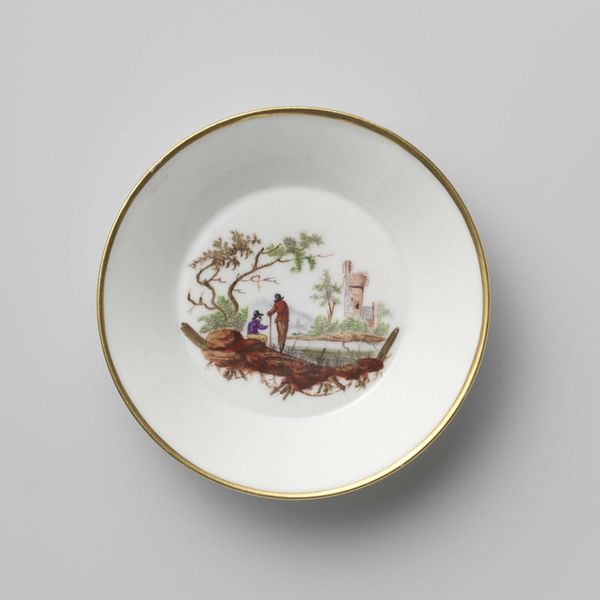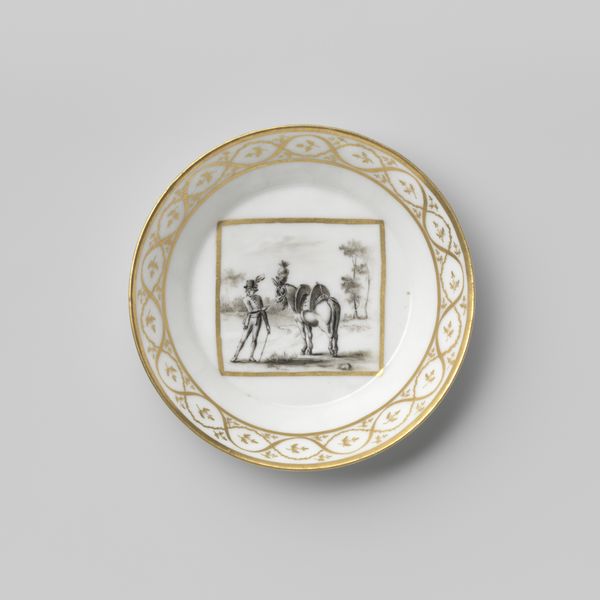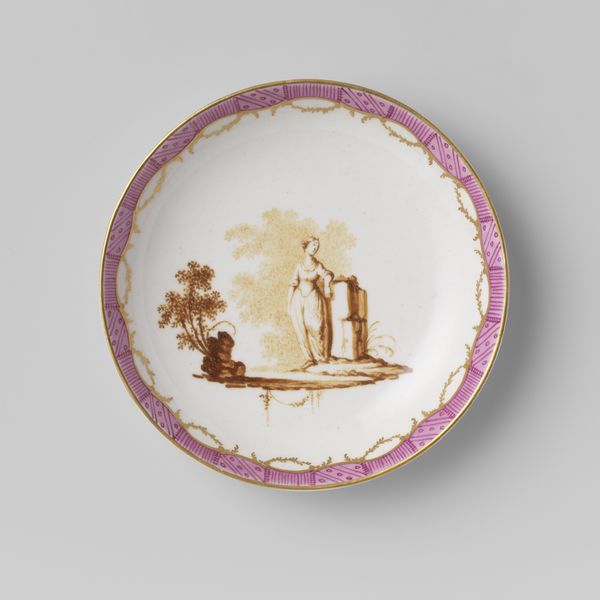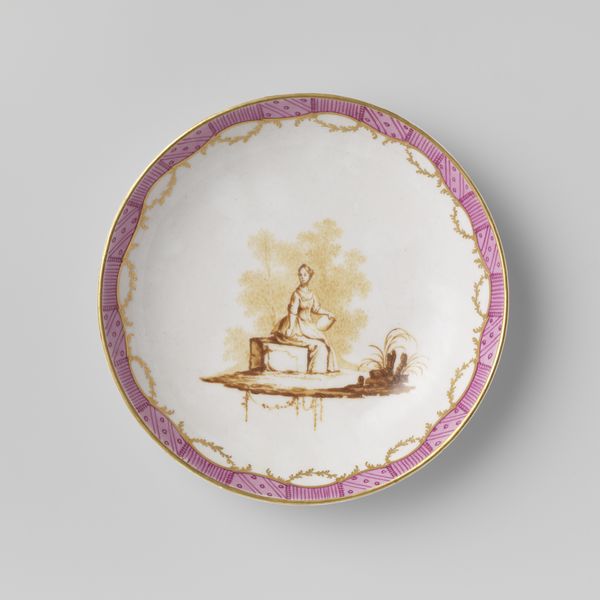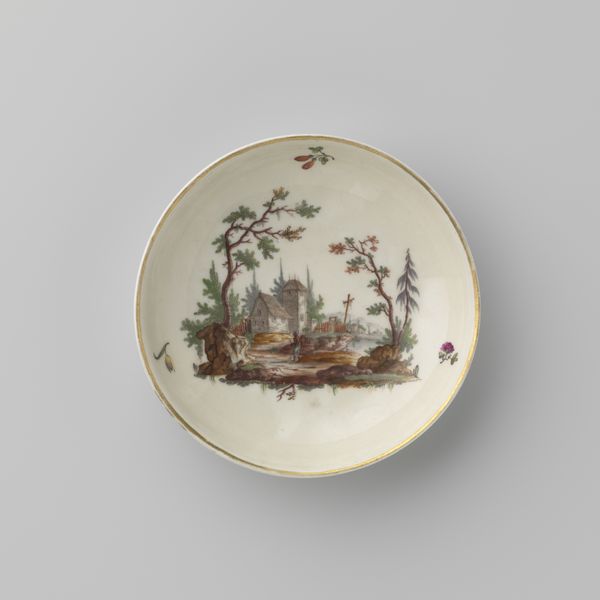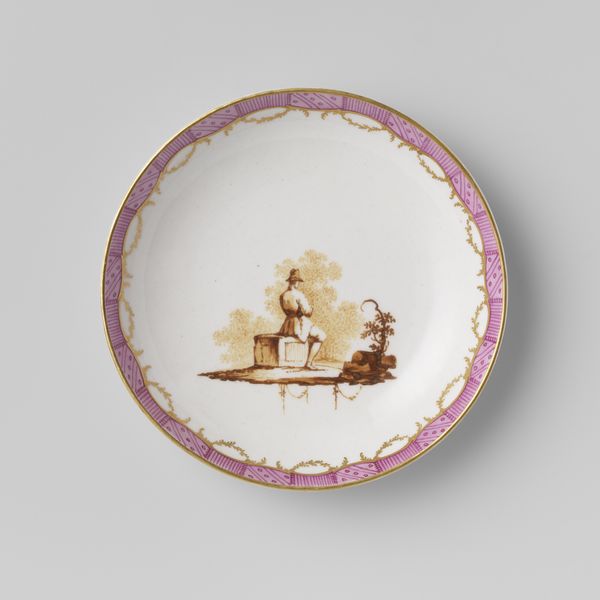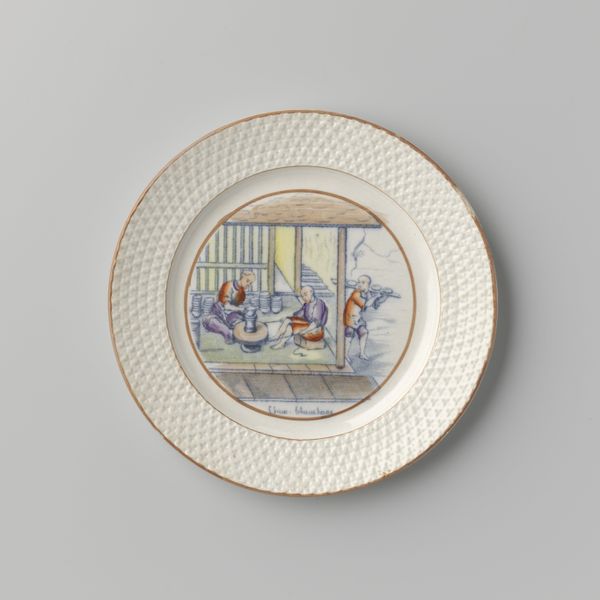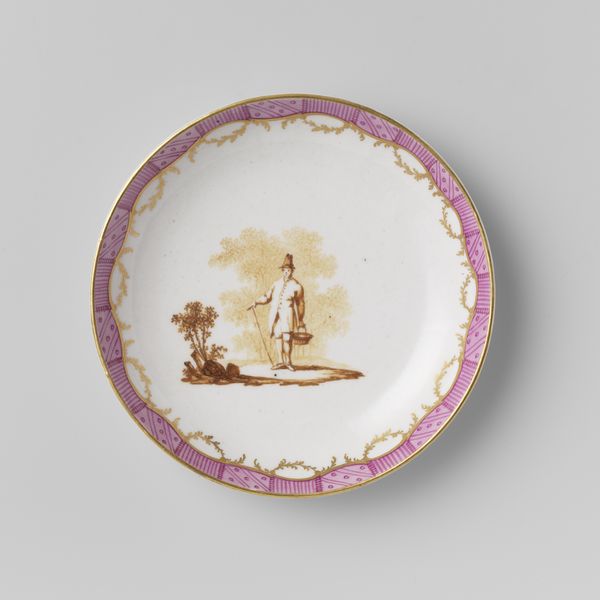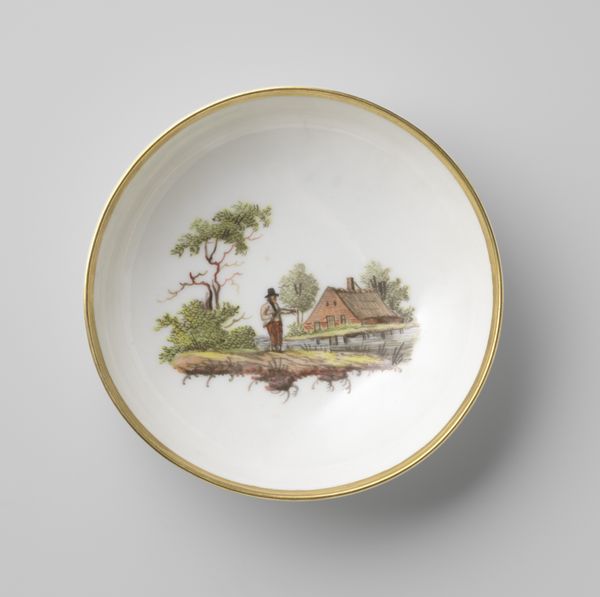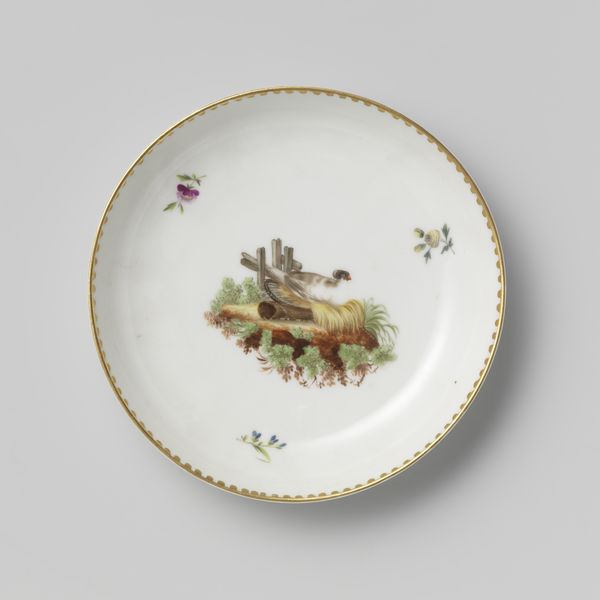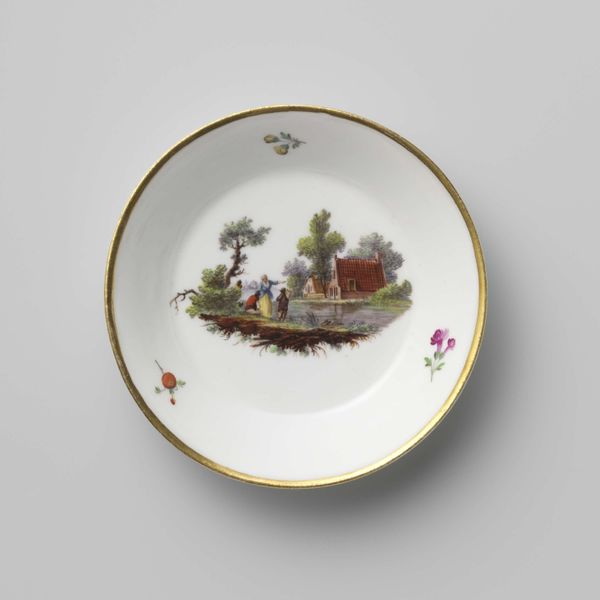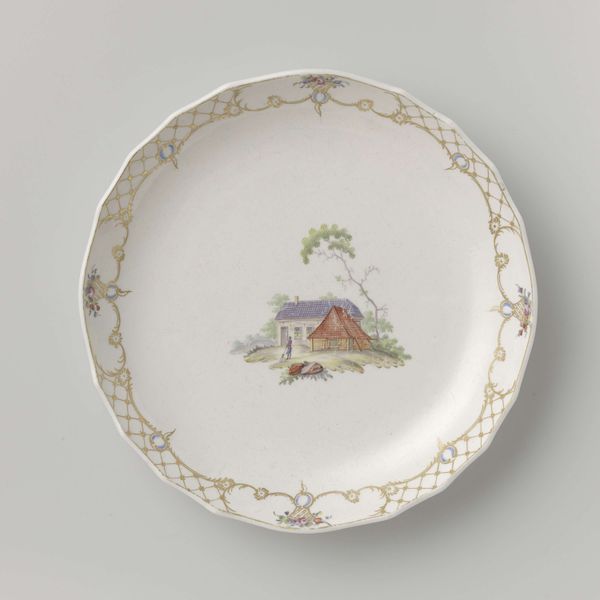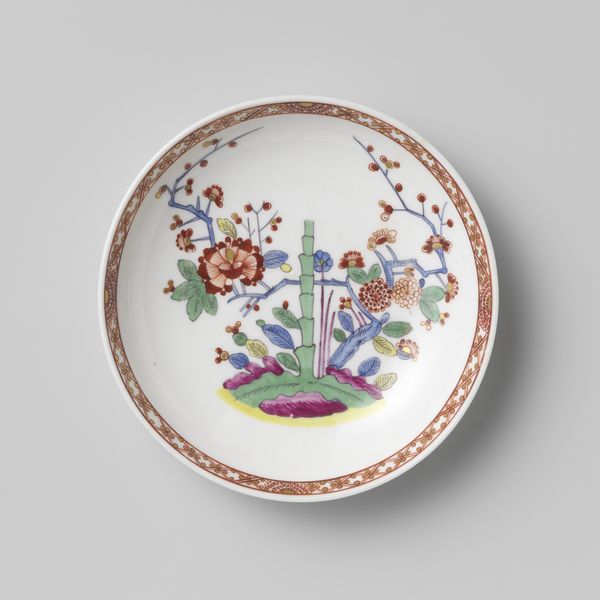
Dimensions: height 2.7 cm, diameter 13.5 cm, diameter 8.1 cm
Copyright: Rijks Museum: Open Domain
Curator: Looking at this delicate piece, we have a porcelain saucer produced by Wallendorf around 1780 to 1800. The decoration features a watercolor illustration of a water landscape with architectural elements, framed by elegant garlands. Editor: It's quite charming. The central landscape reminds me of a miniature painting. The whole thing exudes a refined, almost aristocratic sensibility. What strikes me is how deliberately it merges the decorative function with high art. Curator: Indeed. During the late 18th century, porcelain manufactories were deeply integrated into the fabric of European court life. Objects like these acted as diplomatic gifts, status symbols, and tools for projecting power through refined taste. The Rococo style adds a touch of elegance that was highly valued. Editor: Absolutely, but I am curious about the artisanal process here. The delicate nature of the watercolor on porcelain. It challenges the rigid hierarchy between art and craft. Someone dedicated skilled labor to each brushstroke. It makes me wonder, what were their working conditions and social status in Wallendorf? Curator: It's a crucial point to consider the hands behind such luxurious items. These manufactories operated with very strict divisions of labor. Highly specialized painters might work only on landscapes, and others exclusively on ornamental details. The system produced quality but it certainly also entailed specific working dynamics. Editor: And the landscape itself--how does that reflect social realities? Is it an idealized vision for the privileged, carefully separating itself from the material and social basis of the era? Curator: Very astute observations. Landscape paintings and depictions such as these were almost invariably idealized. They offer a kind of nostalgic retreat, aesthetically distancing themselves from burgeoning industrial development and related social disruption of the time. The presence of architectural elements indicates human control and cultivation of the land, thus symbolizing the patron's own world order. Editor: The material history offers another lens to consider what at first may seem simply picturesque, hinting towards a broader, fascinating perspective about art production in the eighteenth century. Curator: Precisely, reminding us of how this refined artistry always occurred within a social and historical context, often obscuring complex realities that it simultaneously represents.
Comments
No comments
Be the first to comment and join the conversation on the ultimate creative platform.
